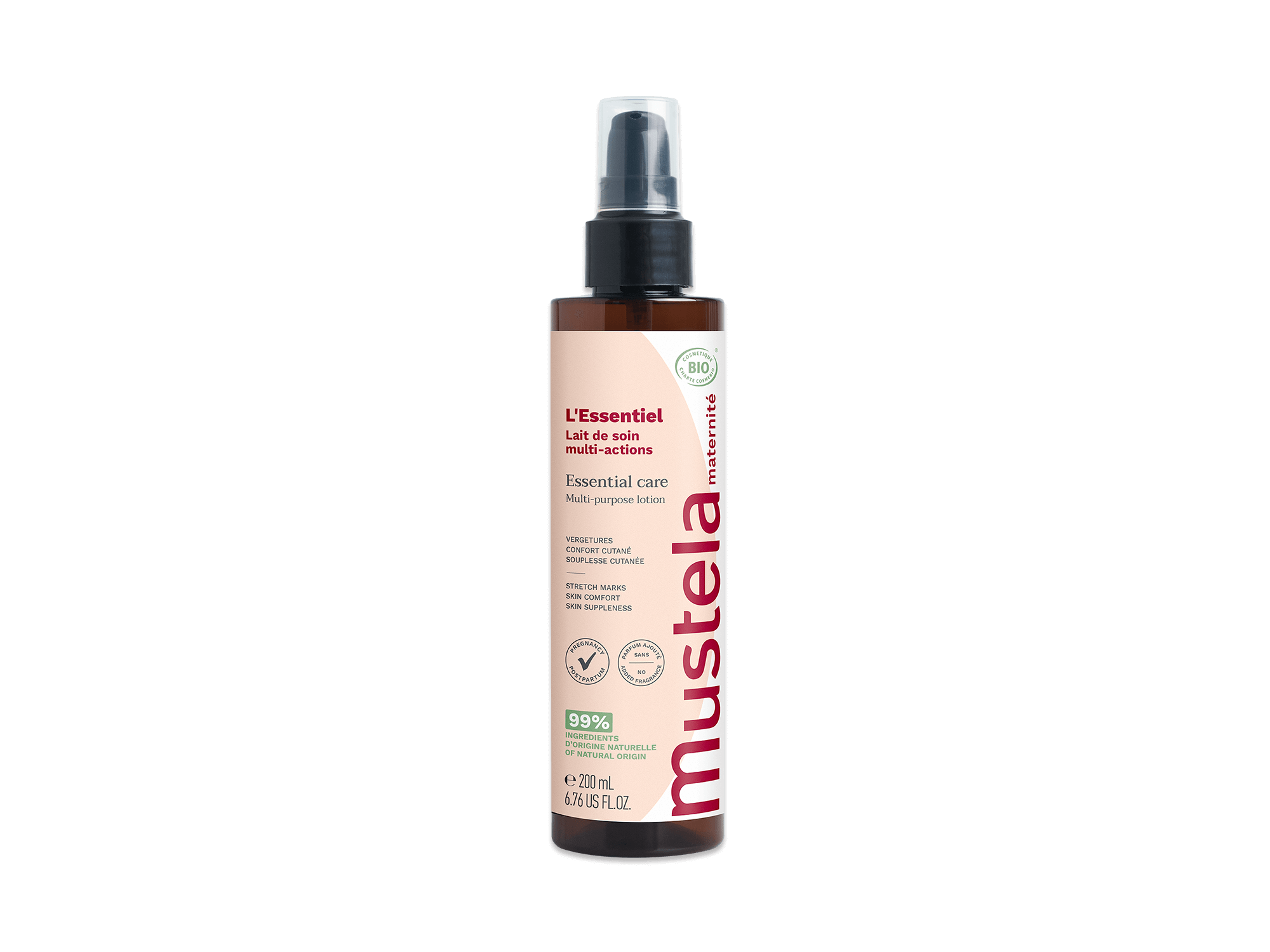Prenatal care is an important part of a healthy pregnancy and allows your doctor to regularly monitor you and your baby. But what should you expect when it comes to your prenatal visit schedule?
Basically, you’ll visit your doctor once a month at the beginning of your pregnancy and then once a week at the end of your pregnancy. That said, it’s important to schedule your first prenatal visit as soon as you see a positive pregnancy test!
In this article, the experts at Mustela discuss how your prenatal visit schedule will most likely look and what to expect during each appointment.
Prenatal Visit Schedule: First Trimester

This is such an exciting time in your life! When you saw the positive pregnancy test, you were probably four to six weeks pregnant, so go ahead and call your doctor to schedule your first appointment.
During the first trimester, you will have your initial prenatal visit, and then your doctor will schedule your visits every four weeks or once a month.
Check with the doctor or staff for a printout of your prenatal visit schedule.
What To Expect At Your First Appointment
Your first prenatal visit will be around six to nine weeks and will most likely be the lengthiest of all your appointments, so block out a good bit of time on your calendar.
Your doctor will ask a good bit of detailed questions and perform a pretty thorough check. Let’s take a look at what they’ll do during this appointment.
Medical History
Your doctor will ask questions about your:
- Last menstrual cycle so they can give you a due date
- Gynecological history
- Obstetrical history (any past pregnancies)
- Personal and family medical history
- Supplements or medicines you’re taking (if any)
- Lifestyle (use of tobacco products, alcohol, and caffeine; eating and exercising habits)
- Recent travel adventures
- Feelings of depression or anxiety (if any)
Lab Tests
Your doctor will order various lab work to check your blood for:
- Blood type and Rh status
- hCG levels
- Anemia
- Hemoglobin levels
- Infections such as hepatitis B, syphilis, gonorrhea, chlamydia, and HIV
- Thyroid levels
- Any other important screenings
Physical Exam
To give you and your baby the best care, your doctor will need to do a thorough physical exam, which most likely will also include a Pap smear to detect any abnormal cervical cells.
Your doctor’s observation also includes:
- Checking your blood pressure
- Measuring your height and weight to determine your recommended weight gain for a healthy pregnancy
- A breast exam
- A pelvic exam
- Screening your heart, lungs, and thyroid
Discuss any pregnancy discomforts, such as nausea and fatigue, with your doctor. Be honest with your doctor so they can take care of you and your baby to the best of their knowledge.

Some doctors also do an ultrasound during the first trimester to confirm or date your pregnancy. (Your first prenatal visit will vary based on the specific policies of your doctor’s office.)
What To Expect At Your 12-Week Appointment
You're nearing the end of your first trimester! During this appointment, you can expect your doctor to check the following:
- Weight and blood pressure
- Urine for sugar and protein levels
- Your baby’s heartbeat (This will be the first time you’ll hear it!)
- Size of your uterus
- Hands and feet for any swelling
Prenatal Visit Schedule: Second Trimester

Assuming you have a healthy pregnancy and no further examinations are necessary, this is what your prenatal visit schedule will look like during your second trimester:
- Four-month appointment (around 16 weeks)
- Five-month appointment (around 20 weeks)
- Six-month appointment (around 24 weeks)
What To Expect During Routine Appointments
Many of your appointments from here on out will look similar regarding what your doctor will check for. During these visits, you can expect your doctor to look at:
- Weight and blood pressure
- Urine for sugar and protein levels
- Your baby’s heartbeat
- Size of your uterus
- Your fundal height (The size of your uterus is used to assess fetal growth and development. Your doctor will get this measurement by measuring the length from the top of your uterus to the top of your pubic bone. This measurement should match how many weeks you are. Example: If you’re 20 weeks pregnant, your fundal height should equal 20 centimeters.)
- Hands and feet for swelling
- Any symptoms you’ve been experiencing
At this point in your pregnancy, you may notice your skin becoming dry and starting to stretch a bit. Don’t worry; it’s completely normal!
To tackle dry skin, try Mustela’s Stretch Marks Cream. This velvety, hard-working cream delivers immediate moisture and comfort to your skin!
And our Stretch Marks Oil treats recently formed stretch marks. It’s a fast-absorbing oil that hydrates your skin throughout your pregnancy!
What To Expect During Your 20-Week Sonogram:
Sometime around your 20-week appointment, your doctor will schedule an ultrasound to determine the gender of your baby! During this sonogram, your sonographer will take a look at:
- Baby’s size and all their major organs
- Amniotic fluid
- Location of placenta
Your sonographer passes this information to your doctor to give them a clear picture (literally!) of the overall health of your baby and your pregnancy.
Prenatal Visit Schedule: Third Trimester

During your third trimester, your prenatal visits will be every two weeks until the last month of your pregnancy, when you’ll have them every week. So that means your prenatal visit schedule will look like this:
- 28 weeks
- 30 weeks
- 32 weeks
- 34 weeks
- 36 weeks
- 37 weeks
- 38 weeks
- 39 weeks
- 40 weeks
What To Expect At Your Seventh- and Eighth-Month Visits
During your seventh and eighth months of pregnancy, expect your doctor to check the following:
- Weight and blood pressure
- Urine for sugar and protein
- Your baby’s heartbeat
- Your fundal height (top of your uterus)
- Size and position of your baby
- Feet and hands for swelling
- Varicose veins in your legs
- Glucose screen test (read below for more information)
- Group B strep test (read below for more information)
- Blood test for anemia
- Any symptoms you’ve been having

Glucose Screen Test
This test is used to determine if you have gestational diabetes. Once you arrive at your doctor’s office, be prepared to have your blood drawn first.
Next, you’ll drink a very sugary drink that tastes like flat orange soda. Some women enjoy the taste, while others feel a little queasy afterward!
After you consume the entire drink, you’ll wait one hour before having your blood drawn again. If your blood work comes back with elevated numbers, your doctor will order the next level of tests, which is used to officially diagnose gestational diabetes.
Should you need to take the second test (no studying required!), you’ll have to fast before the appointment. Just like with the initial round of tests, your doctor will draw your blood first and then have you consume the drink.
The only difference is this time, your blood will be drawn every hour for three hours. Be prepared to stay in your doctor’s office for three to four hours.
If the results from this test also come back elevated, your doctor will discuss management techniques for gestational diabetes.
But don’t let this information worry you. Most women who monitor their blood sugar levels and work closely with their doctor have perfectly normal pregnancies and healthy babies!

Group B Strep Test
Group B Strep (GBS) is bacteria that can be found in the vaginas of healthy women. (It’s not related to strep, the throat infection.)
If you are a carrier of GBS, your baby can catch the infection during delivery when they pass through the birth canal. While this bacteria isn’t harmful to you, it can be dangerous for your baby.
To check for GBS, your doctor will perform a test just like they would a Pap smear. If the test shows that you’re a carrier, you’ll receive antibiotics through an IV once you’re in labor. This way, you won’t pass the infection to your baby!
You’re routinely tested for GBS around the seventh or eighth month of pregnancy so your doctors can be prepared to give you the antibiotics at the onset of labor.
What To Expect During Your Ninth Month
Similar to months seven and eight, your doctor will closely monitor you and your baby during this time. Since you’re getting closer to your due date, expect a few additional observations from your doctor.
During your last month of pregnancy, they will take a look at:
- Your cervix by an internal examination to check for effacement (thinning) and dilation (opening)
- Baby’s heartbeat
- Baby’s size (At this point in your pregnancy, your doctor may give you an estimation of your baby’s weight. They can tell your baby’s presentation: head or bottom first, and their position: front- or rear-facing.)
- Any questions or concerns you may have about delivery
A Beautiful Pregnancy And Beautiful Skin

Throughout these nine months, your prenatal visits are special moments of checking on your sweet little baby. It’s exciting to see your belly grow with each visit! But that also means possible stretch marks.
The good news is that Mustela offers a line of prenatal products, including our Stretch Marks Cream and Bust Firming Serum, to soothe and hydrate your skin while you manage the busyness of your prenatal visit schedule.
Let Mustela help you start your beautiful pregnancy with beautiful skin!

















